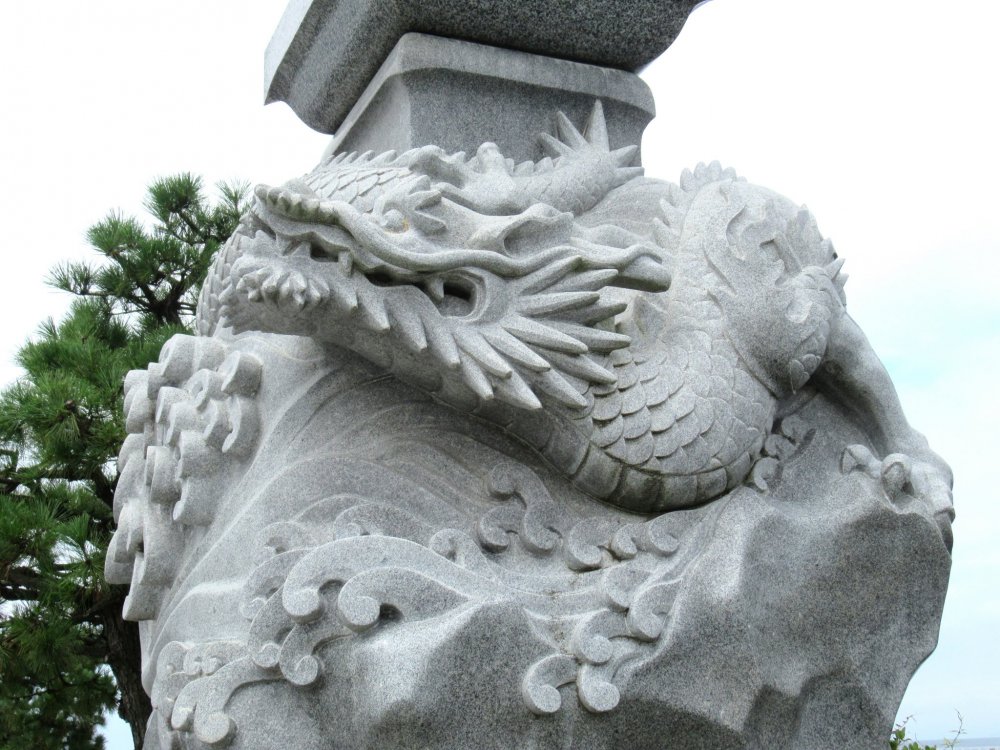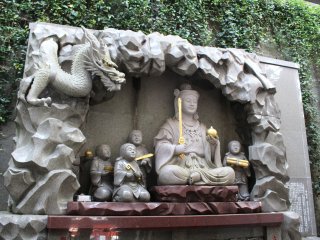On my recent visit to Enoshima I came across many dragon sculptures and statues - more than in any other place I've been to in Japan. After that I became interested to learn about the meaning of the dragon in Japan.
A dragon is a mythological character, a snake, I'd read, with wings and endowed with magical abilities and spiritual qualities. The word ‘dragon’ came from the combination of Greek words for snake and fish. In Europe a dragon was considered to be a cruel and primitive creature that could only be soothed or defeated by the gods, and then later by some outstanding human hero.
In Buddhism, though, the dragon has another meaning. A dragon combines two worlds - the ‘upper’ world as a flying creature and the ‘underworld’ as a snake. In the Chinese culture that influenced Japan's, a dragon is one of the ‘Yang’ symbols indicating the masculine. Dragons exhibiting Chinese roots are usually pictured as a long snake with fish-like scales, clawed feet, two horns and spikes along its spine. The dragons that I saw on Enoshima island had all of these features in their appearance.
Unlike in Europe, a dragon in Japan is considered to be a symbol of happiness. In mythology it can produce the much sought after Elixir of Immortality and has strong connections with water. Accordingly, a dragon will often be found at springs and wells and many Shinto shrines will have a dragon (or two or three...) as part of their temizuya ablution wells where worshippers come to purify themselves before prayer.
I recalled seeing dragons at such shrines as Suwa Taisha, Sumiyoshi Taisha, as well as in Asakusa and elsewhere. But it was the concentration of dragons on Enoshima island that sparked my curiosity and made want to learn a bit more about them.
























































